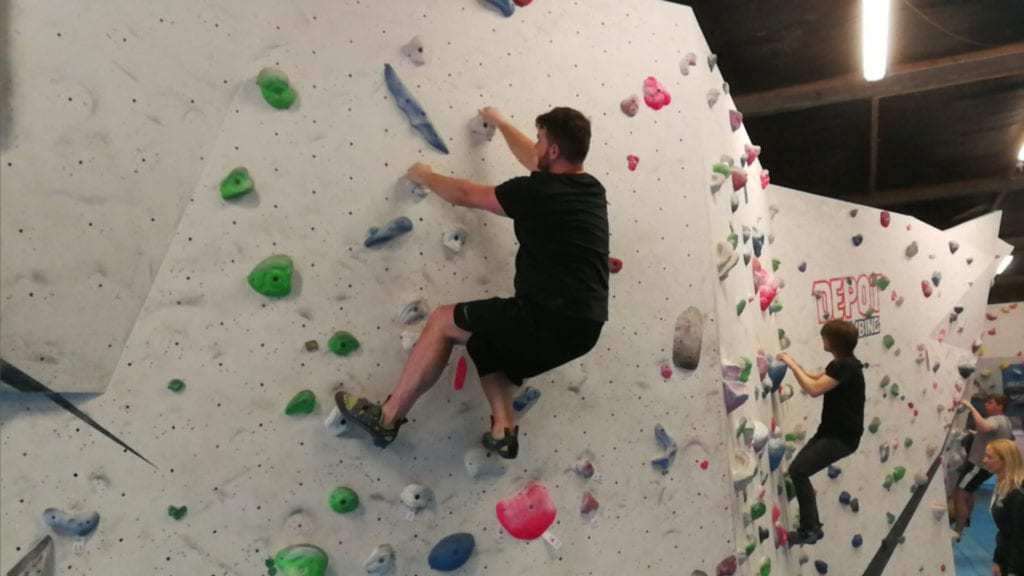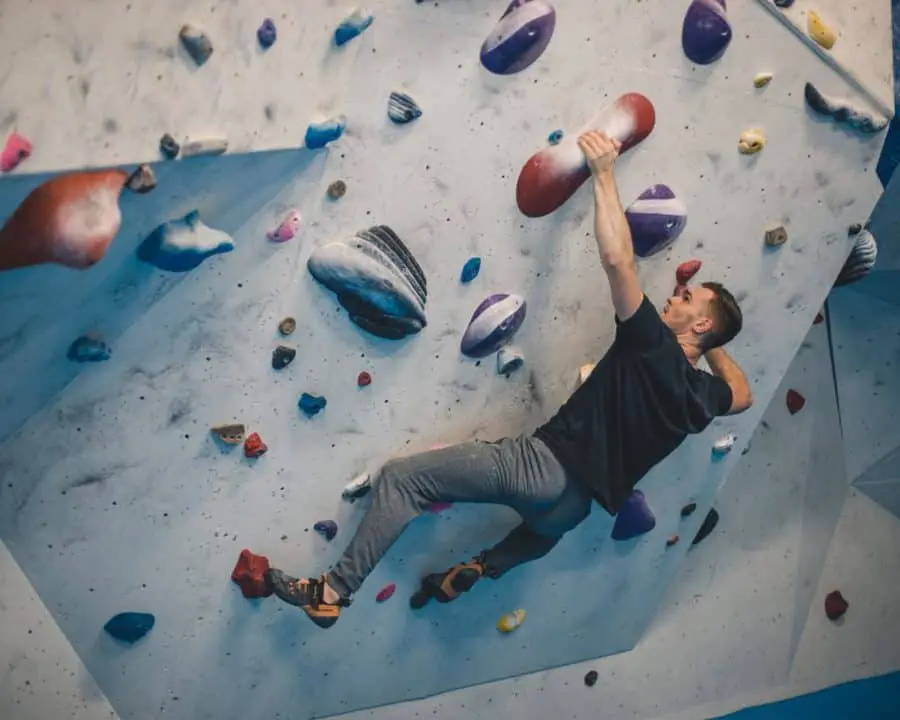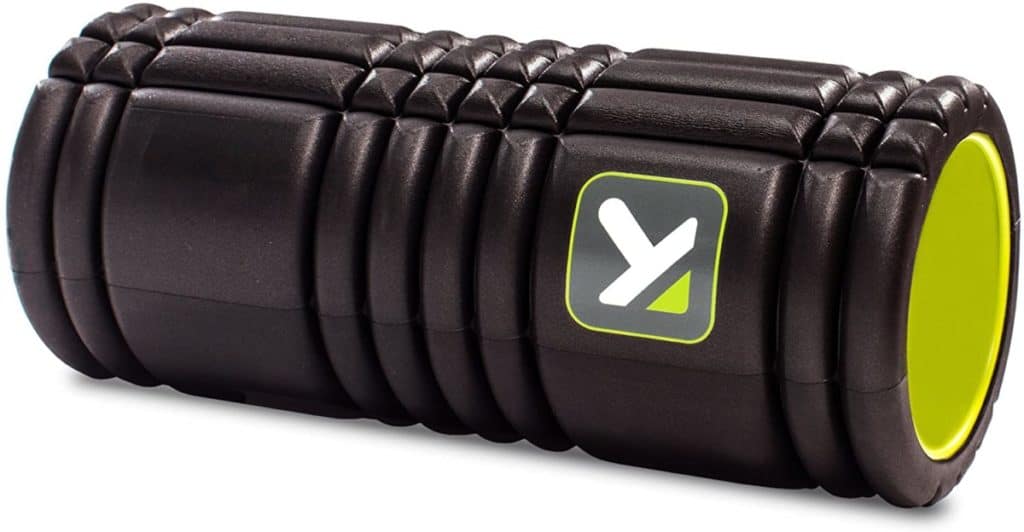
As a beginner, it’s hard to know how often you should climb to improve your technique, strength, and overall endurance without harming your body. You may only have enough time for a day or two a week and you’re wondering if that’s enough to improve. When I started climbing I thought the same. I didn’t know how much climbing was too much. Some muscles become so sore the next day after climbing that you don’t use on a day to day basis, and you don’t want to injure them by over extending their capabilities because they aren’t ready to be pushed. This is understandable, and you’ve done the right thing by coming to this article for more information.
So, how often should you climb as a beginner? Beginner climbers should climb 3 times a week maximum – spread the days out over the 7 days so you aren’t climbing one day after another. This is so a beginner has time to heal their muscles, while getting them used to a new type of exercise and a workout that their body isn’t used to. If you start to climb more than 3 times a week as a beginner you’ll probably acquire more injuries than you should be and your muscles won’t have the proper recovery time. As you progress more as a climber, you will HAVE to increase the amount of days you climb per week to keep improving on the climbing wall. If you are climbing one day after another, try to keep the second day as a lighter workout day – easier climbs using less strength to improve technique.
Page Jumps
- Should You Climb Every Day As a Beginner?
- When Should I Increase the Amount I Climb?
- How to Climb on the Days You Train
- How to Know When You Should Reduce The amount of Days You Climb
- Training Regimes for Improvement in All Areas
- Recovery Methods for Fatigued Muscles and Joints
- Related Questions
Should You Climb Every Day As a Beginner?
Climbing every day as a beginner can actually be quite dangerous. If the strength required for certain situations is something your body isn’t used to, you can pull muscles, rip tendons and damage ligaments. Therefore it is not advised that you climb every day. It is advisable that you climb maximum of three days a week as a beginner. This is so your body can get used to the need for more strength in particular areas that it probably wasn’t use to before. To be quite honest, I’m not sure you’d actually want to climb every day as a beginner; you’d feel so sore every day of your life that you’d probably be miserable.
When climbing, you are typically using muscles that are barely used in many other sports and activities. I used to train Brazilian Jiu Jitsu which is a grappling martial art where the participants wear a gi (one of those kimonos that Karate guys wear). There’s a lot of gripping involved on the other person’s gi which works the forearms on a large scale, so we used to do a lot of training to improve this area which would in turn help our grip strength. Since climbing, however I’ve realised one thing: there’s no other training for forearm and finger strength like climbing. I wish I’d have known that when I trained BJJ.
When Should You Increase the Amount You Climb?
At some point in time you may want to improve more quickly. At this point you’re going to wonder if you should increase the amount you climb per week. This is something you’re going to have to judge for yourself. There are a few ways to do this.
When you realise you have stopped improving as quickly
If you aren’t improving as quickly that means you’re ready for an upgrade, but to do this you’ll have to download information faster into your hard drive… for any non-techies out there, that means you’re going to have to learn faster. To learn faster you’re probably going to have to do three things: concentrate more on using the right technique, increase strength in areas that will help climbing, climb more often. The easiest thing to do out of the three is to climb more often. That is, of course, presuming you have time.
When you aren’t feeling as sore after climbing
If after the last few times of climbing you haven’t been feeling as sore after a usual session, that will probably mean your body is now used to your regime and can handle more climbing sessions. You’ve upped the endurance of your muscles, tendons, and ligaments and they’re now adapted to your routine. It’s time to improve those muscles by climbing one more day per week and therefore increase your climbing ability.
The amount of injuries you’re picking up as a result of climbing
If you’re climbing 2 days a week and you’re picking up annoying injuries as a result then you may want to wait before increasing the amount you train. You’re just increasing the probability you’ll obtain more injuries or worsen your current ones. You won’t improve much if you’re constantly on the mend.

How to Climb on the Days You Train
When you’re climbing you should be using proper technique, without the need for the overuse of strength to get up the wall. By using proper technique, you limit the probability of injuries that you may receive and you’ll also improve quicker.
You don’t want to burn yourself out too hard, too fast. It’s easy to burn yourself out as a beginner. A lot of beginners think it’s a good idea to get back up and climb straight away after falling off half way through a climb, but this burns your forearms out due to intense gripping. Try to leave at least a minute in between climbs – whether fail or success.
How to Know When You Should Reduce the Amount of Days You Climb
If you’ve increased the amount you climb throughout the week you should have definitely noticed something different. This “something” could be a positive or a negative. Obviously the positives that come from increasing the amount you train are: improvement of rock climbing ability, increased strength and endurance, and overall health benefits. But if you’re getting injured all the time when you’re climbing, you’re feeling fatigued all the time, or it’s having a negative impact on another part of your life (e.g. family), then you may want to consider reducing the amount of days you climb per week.
Training Regimes for Improvement in All Areas
If you want to climb as much as possible throughout the week but don’t want to burn out your muscles as a beginner, then you might want to consider different training regimes on each day you climb. Climbing three days a week as a beginner can be healthy and help you improve if you focus on your body’s recovery afterwards and train different muscle areas on the days you climb. We’ll be talking about recovery in the next section – in this section let’s talking about ways you can climb without using the same muscles.
As you may or may not know there are three different types of climbs: slabs, vertical climbs, and over hangs. Each type of climb trains different muscles groups. There are also climbs which use more grip strength due to the size of the hand holds. Vertical climbs and slabs are harder on the thighs and calves then overhangs, and overhangs use upper body muscles more. If you only climb slabs and vertical climbs in one session and overhangs in the next it might make it easier for you to train more often.
Incorporating easier climbs into your regime can also help you improve and climb more often. When you attempt a climb below your current grade, you should try to use as much technique as possible and hardly any strength. By doing this your technical skills will improve and you’ll also be able to climb more due to the fact your muscles won’t be as sore.
If you really want to start improving more quickly you should incorporate hangboarding into your regime. Check out my hangboard recommendations by clicking here. If you can’t afford a hangboard or have nowhere to put it in your home, there’s always finger-strength and grip trainers that you can buy from Amazon. Check their price by clicking here.
Recovery Methods for Fatigued Muscles and Joints
There are many methods of recovery for injuries, fatigued and sore muscles, and joints. If you have an injury the best thing to do is use the RICE method: Rest, Ice, Compression, and Elevation. Rest your injury until it has healed, ice it straight away and continuously (up to 30 minutes at a time) to reduce inflammation, compress the injury by wrapping it with a towel to reduce swelling, and if possible lift the body part that’s injured above your heart.
Deep tissue massage (sports massage) is a great way to promote healing of muscles whether they’ve been injured or fatigued. This type of massage can be quite painful at the time and can also be sore for a few days after, but in my own experience it can help your muscle fatigue recovery in a massive way.
Foam rolling is also a good way you can massage your muscles at home, and can be done every few days. You’re going to want to buy a foam roller that’s tried and tested which I which I recommend the TriggerPoint GRID Foam Roller – check the price on Amazon by clicking here. If you buy it from Amazon it also comes with instructional videos.
Many athletes swear by the method of bathing in a bath of ice to reduce muscle soreness and fatigue while promoting healing of these muscles. You can give this a go yourself at home! Grab 2 or 3 bags of ice, fill your bath with cold water, pour in the ice and get in the bath. It’s not pleasant at first, but after a good few times of doing it you’ll get used to it. You may even start to enjoy it.
You can also apply heat to increase blood flow into an injured or sore area which will encourage that area to heal. However, it is advised that you do not apply heat within the first 48 hours of the injury occurring. This is because in the first 48 hours of an injury it is swollen which means tissue is bleeding – heat draws more blood to that area. If your injury is acute and is swollen non-stop you should not apply heat to the area.
Related Questions
Should you climb every day? If you are an elite level climber you should probably climb 6 or 7 days a week to keep improving or stay at your climbing grade. If you’re advanced enough and feel like your body can take it, you can climb every day if you wish but it may be a hindrance rather than an advantage if your body isn’t ready.
How many days in a row can you climb? This depends on your rock climbing experience and how adapted your body is to climbing. If you’re very experienced you can climb 3, 4 or even 5 days in a row. But if you’re a beginner it isn’t advised to climb more than 3 times a week spread out over the 7 days.


